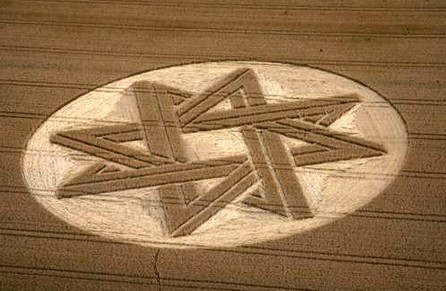Eight-pointed stars: where do they come from and what do they mean?

The ocagrams - eight-pointed stars - present themselves in a variety of different cultures and modern users of the symbol freely borrow from these sources.
Babylonian
In Babylonian symbolism, the goddess Ishtar is represented by an eight-pointed starburst and is associated with the planet of Venus. Today, some people identify the Greek Aphrodite, which the Romans equated with their Venus, in Ishtar. Both goddesses represent lust and sexuality, although Ishtar also represents fertility and war.
Judeo-Christian
The number eight often represents beginnings, resurrection, salvation and super abundance. This has to do, in part, with the fact that the number seven is a completion number. The eighth day, for example, is the first day of a new seven-day week and a Jewish child enters the Covenant of God on the eighth day of life through circumcision.
Egyptian
The ancient Egyptians of the United Kingdom recognized a group of eight deities, four males and four females, with the female carrying female forms of the male names: Nu, Nanet, Amun, Amunet, Kuk, Kauket, Huh and Hauhet. Each pair represents a primordial force, water, air, darkness and infinity, and together they create the world and the sun god Ra from primordial waters. Together, these eight are known as Ogdoad and this context is borrowed from other cultures that can represent it with an ocagram.
Gnostics
The XNUMXnd-century Gnostic Valentinius wrote of his concept of Ogdoad, which again consists of four male / female couples of what they considered primordial principles. First, Abyss and Silence produced Mind and Truth, which then produced Word and Life, which ultimately produced Man and Church. Today, various esoteric pursuers have tapped into various Ogdoad concepts.
Lakshmi star
In Hinduism, Lakshmi, goddess of wealth, has eight emanations known as Ashtalakshmi, which are represented by two intertwined squares forming an octagram. These emanations represent eight forms of wealth: monetary, transportation capacity, endless prosperity, victory, patience, health and nourishment, knowledge and family.
Overlapping squares
The ocagrams formed by overlapping squares often emphasize duality: yin and yang, male and female, spiritual and material. Squares are often connected to the physical world: four elements, four cardinal directions, etc. Together, they can mean positive and negative aspects of the four elements, for example, and balance them.
Judeo-Christian esoterica
Esoteric thinkers who work with Hebrew and the names of God could place the Hebrew letters for YHWH and ADNI (Yahweh and Adonai) at the points of an ocagram.
Chaos star
A chaos star is made up of eight points that radiate from a central point. Originating from fiction, particularly from Michael Moorcock's writings, it has now been adopted in a variety of additional contexts, including religious and magical ones. In particular, it has been adopted by some as a symbol of the magic of chaos.
Buddhism
Buddhists use an eight-spoke wheel to represent the Eightfold Path taught by the Buddha as a means of escaping suffering through the breaking of attachments. These paths are the right vision, the right intention, the right word, the right action, the right sustenance, the right effort, the right awareness and the right concentration.
The wheel of the year
The Wiccan Wheel of the year is commonly represented by a circle containing eight spokes or an eight-pointed star. Each point is an important holiday known as Sabbat. The Wiccans emphasize the holiday system as a whole: each holiday is influenced by what happened before and prepares for the one that approaches the next.